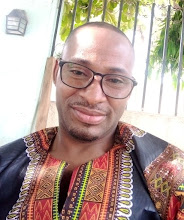The Divine Message speaks directly to the foundations of a group’s understanding and relationship with a supreme being, spirit, or deity that is believed to be the group's creator, guardian, provider, or sustainer. This paper explores the culture and Divine Message of the Ngas people of Nigeria.
What is culture?
Culture can be defined from different perspectives. Newbigin (1986) posits:
By the word culture we have to understand the sum total of ways of living developed by a group of human beings and handed on from generation to generation.
Central to culture is language. The language of the people provides the means by which they express their way of perceiving things and of coping with them… One must also include in culture, and is fundamental to any culture, a set of beliefs, experiences, and practices that seek to grasp and express the ultimate nature of things, that which gives shape and meaning to life, that which claims final loyalty.
Luzbetak (1991) further posits that “culture is (1) a plan (2) consisting of a set of norms, standards, and associated notions and beliefs (3) for coping with the various demands of life, (4) shared by a social group, (5) learned by the individual from the society, and (6) organized into a dynamic (7) system of control.”
Therefore, culture is a life fabric that holds everything together—language, religion, norms, social and control systems of a group. Culture is central to everything that a group of people do either knowingly or unknowingly that has been consistent over generations.
Arkhem is the ways and practices of the ancestors which serve as an unwritten constitution that guides the Ngas people. Arkhem defines rites in different areas of life like festivals, marriages, circumcision, burial, worship, arts, and the like. In Ngas culture, the spiritual and material worlds co-exist and the former gives direction to the latter in every sphere. Their religion, language, ancestral land, customs, and traditions are bound together and define their kinship.
Therefore, Turaki (1997) explains that African “Morality and ethics are founded on and rooted in blood-ancestry and blood-community. An individual or group is defined in terms of this blood-ancestry and blood-community which is of the “seed” of an ancestor. The ancestor/progenitor provides the basis upon which an individual or group can be defined.”
What is Divine Message?
Divine Message is a revelatory message of a supreme being. In Ngas traditional religion, God reveals himself through nature and the cosmos is to be guided by the ancestors wong, spirits kwi/zigol, and deities kum. In Christianity however, the divine message was revealed in nature (Ps 8:3,4), conscience (Rom. 2:14,15), the Bible (2 Tim. 3:16), and Jesus Christ (Heb. 1:1,2).
The major differences in understanding revelation in Christianity and Ngas traditional religion are the Bible and Jesus Christ. The Ngas stopped short at nature, conscience, oral tradition, and the spiritual realms without a divine savior like Jesus Christ.
Worldview
Mbiti (1969) explains the African worldview thus: “I am because we are; and since we are, therefore I am.”
Worldview means African communalism. The group or clan gives essence and meaning to the individual and is superior to him or her. This is different from the Western worldview in which René Descartes spoke of, “I think, therefore I am.” Kwame Bediako explains further that “Our culture is our worldview, that is, fundamental to our understanding of who we are, where we have come from and where we are going. It is everything in us and around us that defines us and shapes us.”
The Ngas worldview also bears the same mark as African communalism.
To READ FURTHER, CLICK http://dx.doi.org/10.13140/RG.2.2.11376.47368

